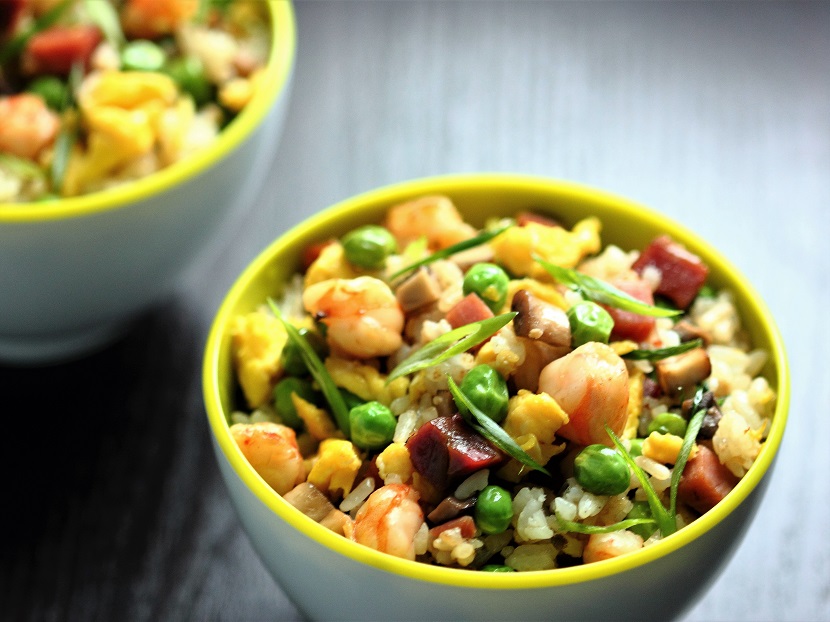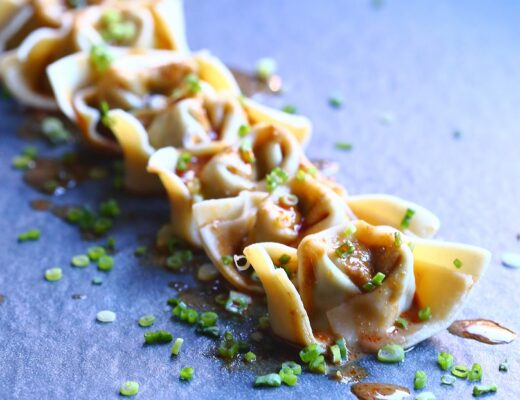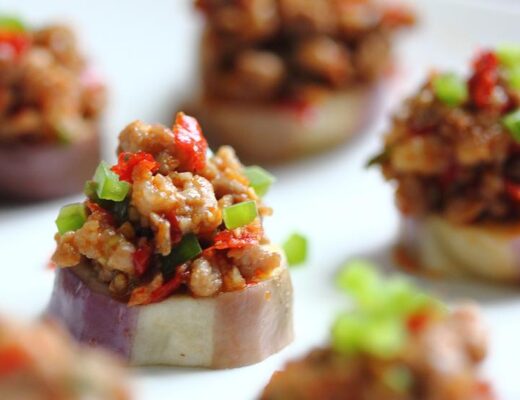Last Updated on October 9, 2020 by Simon Fan
The great thing about making fried rice is you have the creative freedom to dress it up or dress it down. In its most basic form, fried rice can be made with eggs and vegetables as a simple yet nutritionally balanced dish.
Building upon that, you can include other ingredients to elevate your fried rice from good to great. A perfect example is Yangzhou fried rice. Despite its humble origin as a simple homemade egg fried rice, Yangzhou fried rice was transformed, by generations of professional chefs, into a signature dish of the City of Yangzhou in Jiangsu Province. The dish was later introduced to other parts of China, and to other countries through Chinese immigrants.
It’s easy for you to understand why Yangzhou fried rice has become the most famous fried rice in the world if you have tasted a well-made one with a generous amount of shrimp, ham, and mushrooms. Other ingredients, such as chicken, Chinese sausage, sea cucumbers, dried scallops, and bamboo shoots, may also show up in the dish.
Yangzhou fried rice is a great representation of Jiangsu Cuisine—light and subtle, with an emphasis on the natural flavors of the ingredients.
Because peas (also known as English peas, shell peas, and garden peas) are a key ingredient for the dish, I cannot think of a better time to make it than late spring or early summer, when peas are at their best and taste wonderfully sweet and crisp. For the best flavor and texture, shell the peas right before you cook them.
Of course, the real star of the dish is rice. In the finished dish, the rice grains should be separate without clumps, and soft but still slightly firm to the bite. Follow these two tips to achieve that result:
– Use pre-cooked and cooled rice. Day-old rice is ideal.
– Stir-fry the rice with just a little bit of oil over medium-low heat until it’s completely heated through and reaches the desired texture.
Yangzhou fried rice
Serves 2
Ingredients
4 oz (115 g) shelled shrimp, deveined and cut into ⅓-inch (8 mm) pieces
½ teaspoon grated ginger
1 teaspoon soy sauce
1 teaspoon Shaoxing wine
2 large eggs, beaten
Salt and freshly ground white pepper
1 tablespoon plus 2 teaspoons vegetable oil, divided
2 oz (60 g) Chinese ham or other dry-cured ham (such as prosciutto, jamón, or country ham), cut into ¼-inch (6 mm) cubes
2 oz (60 g) cremini or white button mushrooms, cut into ¼-inch (6 mm) cubes
3 oz (85 g) shelled peas, from about 6 oz (170 g) peas in the pod
9 oz (255 g) cooked and cooled rice, preferably day-old
2 scallions, thinly sliced
Directions
- In a bowl, mix the shrimp with the ginger, soy sauce, and wine. Let marinate for 15 minutes.
- Season the eggs lightly with salt and pepper. Place a wok or skillet over medium-high heat until hot, then swirl in 1 teaspoon of the oil. When the oil starts to shimmer, add the eggs and stir quickly to scramble until just set, about 1 minute. Transfer the eggs to a cutting board and roughly chop them into pea-sized pieces.
- Heat 1 tablespoon of the oil in the wok over medium-high heat. Add the ham and mushrooms, and stir-fry until the ham is lightly browned, about 1 minute. Add the peas, and continue to stir-fry for 1 minute. Next, add the shrimp and stir and mix until the shrimp are just cooked through, about 1 minute. Season to taste with salt and pepper. Transfer the mixture to a bowl.
- In the same wok, heat the remaining 1 teaspoon of oil over medium-low heat. Add the rice and three-quarters of the scallions. Stir and cook, breaking up clumps, until the rice grains are heated through and are soft but still slightly firm to the bite, about 4 minutes. Return the eggs and shrimp mixture to the wok, and toss until well combined, about 1 minute. Adjust the seasoning as needed. Serve right away, garnished with the remaining scallions.
Variation: Use diced pressed tofu instead of shrimp and ham for a vegetarian version.



